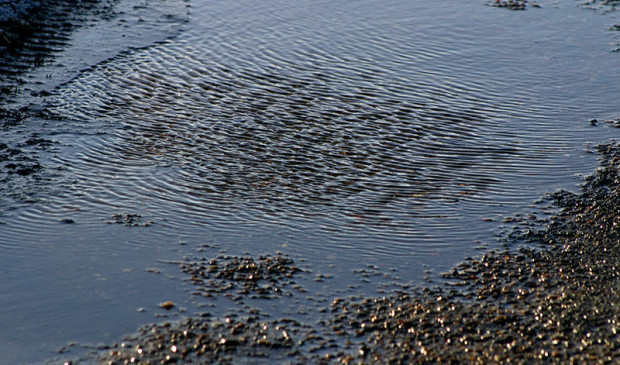Conservation district passes new guidelines
Monday, July 20, 2015 by
Courtney Griffin The Barton Springs/Edwards Aquifer Conservation District Board of Directors unanimously passed updated rules and bylaws governing 170 square miles of freshly annexed territory primarily in Hays County. The move came over objections from an attorney with Houston-based water supplier Electro Purification.
“If you look at the rules, there are a number of places where you have definitions where it’s not clear as to which of the aquifers it applies,” said EP lawyer Ed McCarthy at Thursday’s regular board meeting.
The rules also include language added at the urging of the Trinity Edwards Springs Protection Association that could make it hard for EP to pump any water at all out of its wells in the newly annexed territory.
Electro Purification is the company behind a controversial set of wells in Hays County. The wells were unregulated until recent legislative action placed them under BSEACD regulating authority.
McCarthy told the Austin Monitor that EP’s main concern with the new rules is how the conservation district’s regular permitting process will be applied. McCarthy suggested that the wording offers too much uncertainty and subsequently negates heavy investing in EP’s future infrastructure in the area until it receives a permanent production permit.
That investment could take the form of an 18-mile pipeline to service EP clients in Buda. McCarthy said that it does not make sense for EP to start construction if there are no measurable criteria that define pumping limits.
“As we come in and others come in looking for permits, what kind of testing, what kind of proof – since we have the burden of proof – what are the criteria we have to meet so that when we do what is going to be very expensive testing, we will be able to tell our consultants and experts to look for these things?” he asked the board.
Although McCarthy repeatedly asked board members to better define and quantify what constitutes unreasonable impacts to neighboring wells, they did not clarify.
Trinity Edwards Springs Protection Association attorney Vanessa Puig-Williams asked BSEACD to further generalize wording referring to the area’s future long-term water-level goals. Though no specific pumping number is set, a planning goal of no pumpage could ultimately make it difficult for EP to pump any water out of the region.
Board members granted her request.
The new BSEACD guidelines grant most well owners in the newly annexed area temporary water production permits, as long as they apply before Sept. 19. However, final approval is not guaranteed.
The conservation district can reduce or deny a water production permit only if a well will hurt the Trinity Aquifer’s long-term water-level goal or have an “unreasonable and significant impact to neighboring wells.”
General Manager John Dupnik said his staff will be busy mapping and measuring the new area in the upcoming months in order to better define the impact of wells.
Dupnik told the Monitor that that area of the Hays Trinity Aquifer does not have a Groundwater Availability Model, or GAM, which is an interactive tool conservation districts use to predict the effect water pumping has on the aquifer and surrounding areas.
It will take years to gather the amount of data needed for a GAM, he added, but staff will use aquifer tests and other tools to predict water pumpage effects on smaller areas until then.
Dupnik said the “unreasonable and significant impact to neighboring wells” criteria will be “one of the things that’s very aquifer-specific and very area-specific.” He added that staff hopes to have the standard defined before issuing any regular permits.
By Malene Thyssen (Own work by the original uploader) [GFDL, CC-BY-SA-3.0 or CC BY-SA 2.5 ()], via Wikimedia Commons.
You're a community leader
And we’re honored you look to us for serious, in-depth news. You know a strong community needs local and dedicated watchdog reporting. We’re here for you and that won’t change. Now will you take the powerful next step and support our nonprofit news organization?










